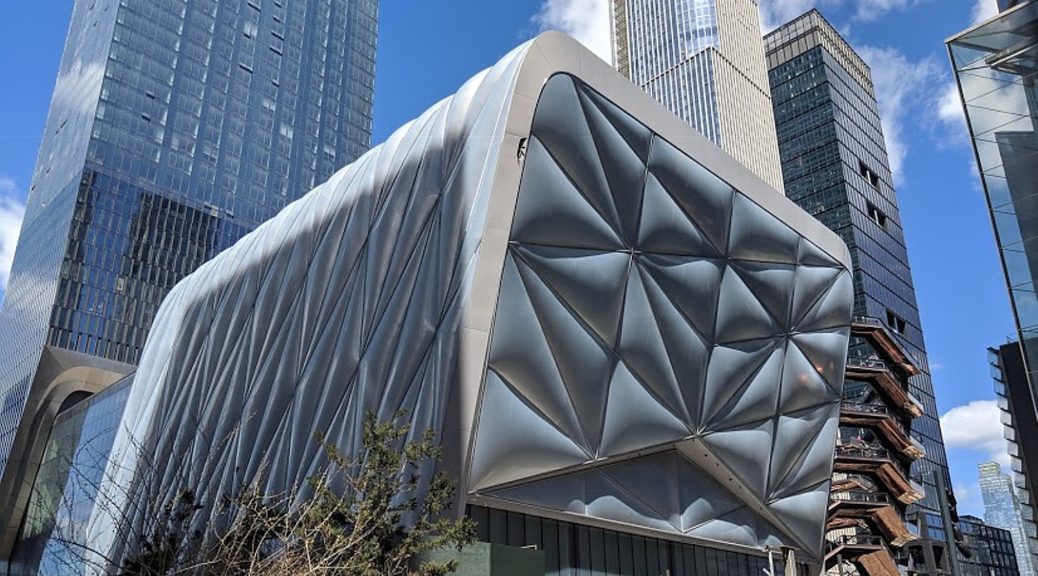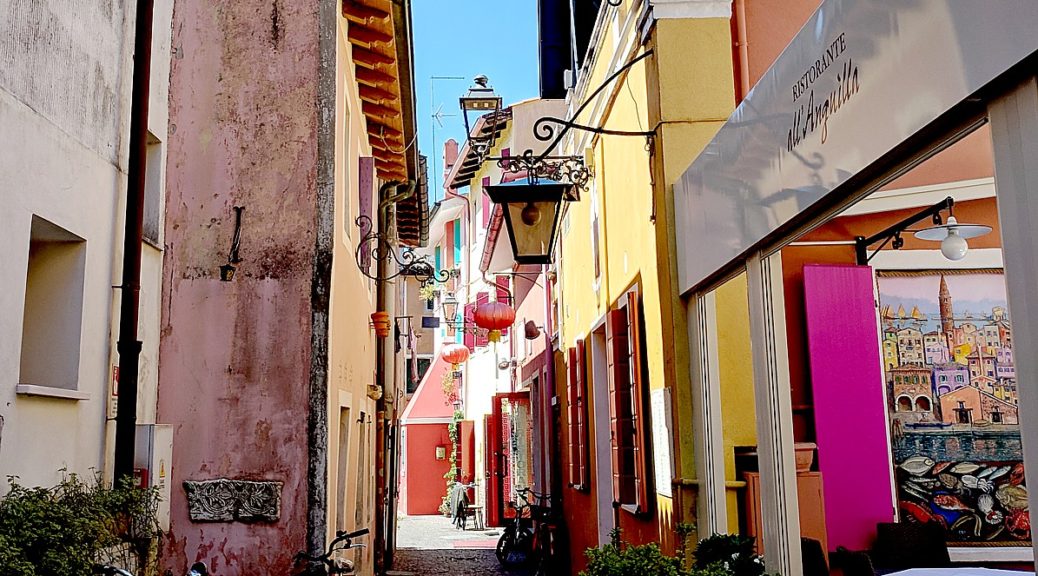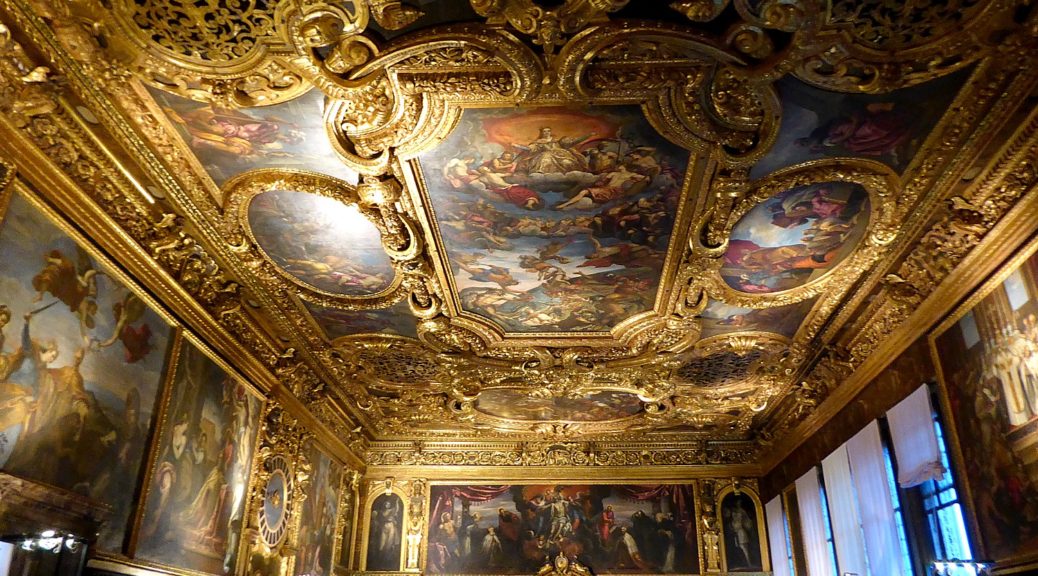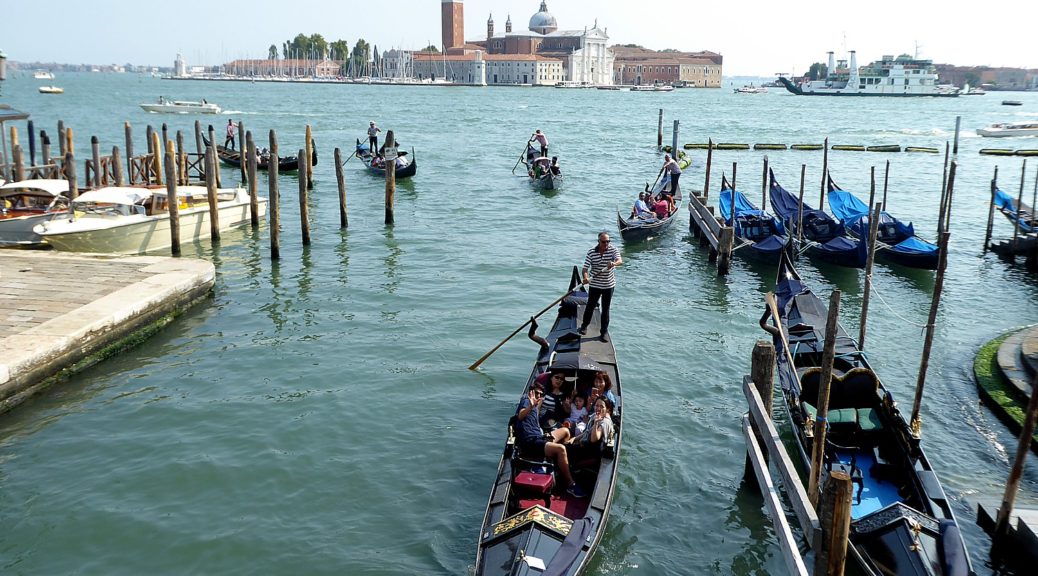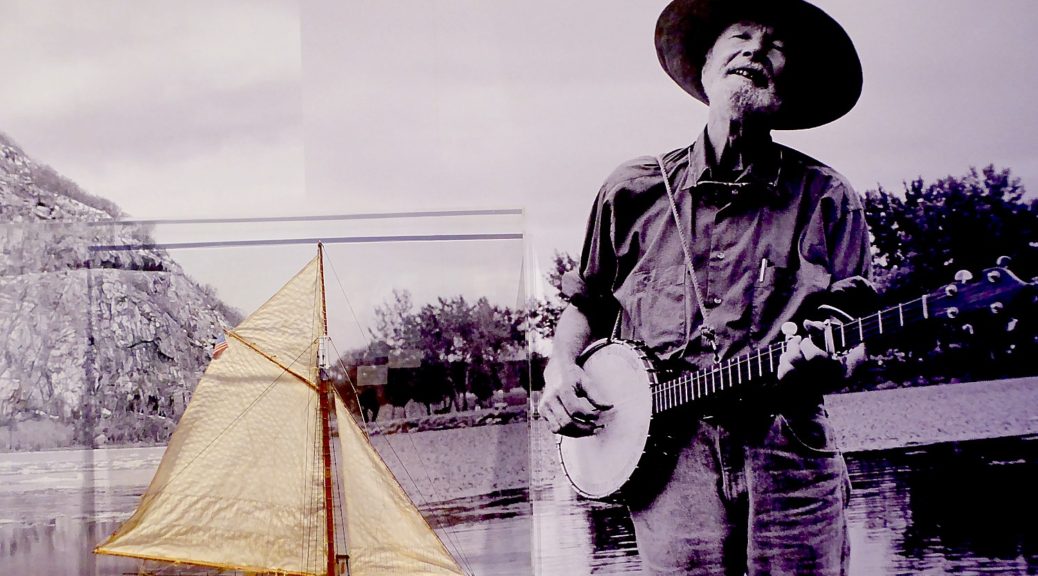By Karen Rubin, Travel Features Syndicate, goingplacesfarandnear.com

Imagine a structure 120 feet high that can fit 2000 people for a concert, but that can move, expand, shrink or be completely removed to expose an open-air plaza. An “anti-institution” cultural institution to provide a home and nurture the full spectrum of the arts, where emerging artists, local artists, and established artists have parity, and audiences represent the diversity and inclusivity of New York with low-priced ticket holders dispersed throughout the house.
This is The Shed, the newest cultural center to open in a city which prides culture above all, sure to be gain a place among the pantheon of iconic art institutions, along with its leading-edge approach to harnessing the arts as a force for social action and public good, its astonishing architecture, flexible, versatile and adaptable enough to enable artists of today and tomorrow and fulfill their vision to be a platform across multi-disciplines.
It’s “the Swiss army knife” of culture,” said Daniel L. Doctoroff, chair of the board, during a press preview prior to the April 5 grand opening, when the principals involved with the genesis of the project spoke of what The Shed, and its mission, meant to the city and society.
Indeed, they noted, in a city of 1200 cultural attractions, The Shed had to be different, beginning with its commitment to commissioning new works, creating a platform – the space and place – for artists across disciplines, engaging audiences across a spectrum of backgrounds and interests, but most significantly, creating a building, that like a “living organism” would keep morphing to accommodate artists’ visions today and decades from now, accommodating the unimaginable ways art and culture might change over time.
Six and a half years ago, after seeing a 60-second animation of what The Shed could be, purpose-built to house various forms of culture and building would move, John Tisch, vice chair of the new institution, told his wife, “The Shed is about future of NYC and we need to be involved.”
“6 ½ years later, here we are discovering the future of NYC and how we as citizens and creators of this institution will discuss culture and humanity, how we all need to be together in the 21st century in NYC.
“There are many cultural institutions – many are about the past. The Shed is about the future.”
“The dictionary defines ‘shed’ as an opened-ended structure with tools,” said Doctoroff. “We designed The Shed as a platform, uniquely adaptable, to liberate artists to fulfill their dreams.”
More than a dozen years ago, Doctoroff said, The Shed “started as small square on map, a placeholder for To Be Determined cultural institution.
“Mayor Bloomberg said ‘Make it different from anything else in New York City.’ That’s not easy in a town of 1200 cultural institutions. It had to play a role in a new edge of New York City, keeping New York City as leading edge of the cultural world.”

Liz Diller of Diller Scofidio + Renfro, lead architect, and David Rockwell of Rockwell Group, collaborating architect, responded to the mandate for flexibility, a one-of-a-kind structure.
“Just as it was to be designed to be flexible, we wanted it to be of and for our time and inclusive of artists across all disciplines,” Doctoroff said. “We proposed commissions of emerging artists across all art forms – the mission drives our work.
“It is a remarkable public/private investment of $500 million to design and construct building and create original works of art.
“New York City continues to be perfect partner under Mayor DiBlasio. The city provided $75 million and the land.
“We are standing in The McCourt, a spectacular space that can do anything an artist can imagine. It was named for the Board member who gave $45 million.
“Griffin Theater was named for one of most generous philanthropists, Ken Griffin, who gave $25 million.
“Altice USA is the founding fiber network partner – so that The Shed is an accessible arts organization with global reach, the first cultural institution with connectivity partner.
“Above all, Mayor Bloomberg, who had vision to transform West Side and create cultural institution as beating heart. The Shed is housed the Bloomberg Building, named for Mayor Bloomberg.
“It’s been a 14-year journey – kind of crazy, new kind of cultural institution in a completely new building in new part of town, new board, new team, performing miracles every day, producing our own work.
“Great architecture demands great purpose,” Doctoroff said.

Alex Poots, the Artistic Director and CEO, said, “I started to imagine the possibilities: a flexible building, built on city land. That was the draw to lure me from England –a public purpose. It was a no brainer, building on what I had been doing for 15 years. [Poots is also involved with the Manchester Festival and with the Park Avenue Armory.]
“Parity among art forms; the ability to commission art – visual and performing arts. And it would not matter if the artist were emerging, established, or a community artist – we don’t need a false hierarchy.
“The Shed is place for invention, curiosity where all artists and audiences can meet.
Alongside all the venerable institutions of city, we hope The Shed can add something.
“It’s rare for a place to be open in the day as a museum, and in the evening a performance center.”

First Commissions
Poots introduced the 2019 inaugural season’s first commissions (and the press were able to watch some rehearsals):
Soundtrack of America, a new live production celebrating the unrivaled impact of African American music on art and popular culture over the past 100 years, conceived by acclaimed filmmaker and artist Steve McQueenand developed with music visionaries and academic experts including Quincy Jones, Maureen Mahon, Dion ‘No I.D.’ Wilson, Tunji Balogun and Greg Philliganes, is a five-night concert series (April 5-14) celebrating the unrivaled impact of African American music on contemporary culture, with performances by emerging musicians.

Reich Richter Pärt, a live performance/exhibition pairing works by master painter Gerhard Richter with a new composition by Steve Reich and an extant composition by Arvo Pärt, performed by The Choir of Trinity Wall Street (April 6-June 2).
Norma Jeane Baker of Troy, a reinvention of Euripides’ Helen by poet Anne Carson, starring Ben Whishaw and the opera singer, Renée Fleming (April 6-May 19).
Björk’s Cornucopia, the multidisciplinary artist’s most elaborate staged concert to date, directed by Lucrecia Martel (May 6-June 1).

Dragon Spring Phoenix Rise. a futuristic kung fu musical conceived by Chen Shi-Zheng and Kung Fu Panda screenwriters Jonathan Aibel and Glenn Berger, with songs by Sia, choreography by Akram Khan, and production design and costumes by Tim Yip (June 22–July 27);
There are also, expansive exhibitions devoted to extant and newly commissioned work by trailblazing artists Trisha Donnelly and Agnes Denes; and an unprecedented opportunity for New York City-based emerging artists of all disciplines to develop and showcase their work throughout The Shed’s spaces via an Open Call commissioning program.
Beneath the stands and stage in The McCourt is the only permanent art installation, “In Front of Itself,” a large-scale, site-specific work by artist Lawrence Weiner embedded into the plaza. It serves as a walkable outdoor area when the movable shell is nested over the fixed building, or as the base of The McCourt when the shell is extended to the east. The 20,000-sq. ft. work features the phrase, “In front of itself” in 12-foot high letters fabricated with custom paving stones.
These first commissions, Poots said, “shows the range of The Shed.” The flexibility of the building makes it possible to transform from one show to the next in just two days.

Art as Social Action
Tamara McCaw, Chief Program Civic Officer, is responsible for fulfilling the mission of The Shed to use art as social action.
“It is my responsibility to serve the community, particularly those under stress or have barriers [to artistic expression]. ]
McCaw oversees the Open Call program, an unprecedented opportunity for 52 New York City-based emerging artists and collectives to develop and showcase their work throughout The Shed’s primary spaces, free to the public (May 30-August 25) and continuing in 2020.
The 52 artists were selected from 930 applications in its first open call. Alex Poots said that The Shed will embark on its next round of emerging talent in 5-6 months.
The Shed has year round social justice residencies, serving 700 students a year
“We are providing a platform for local and emerging artists – selected by diverse panel and Shed staff (2 are on the panel – to present in principal spaces, plaza, theater.” These performances and exhibits will be free to public.
“It is our civic responsibility to reflect, respond to the diverse communities of NYC – with affordable tickets ($10; free for 18 year olds and under and CUNY students), and reserve 10% of low-income seats that will be distributed throughout house (not the back or nosebleed section)
Addressing how The Shed intends to be responsive to diverse audiences, Doctoroff noted that the building is open – the restaurant, café and lobby. Anyone can come through without a ticket, and every gallery and theater can be separately ticketed. The goal is to make access to exhibits and performers and accessible as possible.
McCaw added, “People from public housing are already are coming because they are of process. We did outreach for open call. There are artists who live in public housing here. When you come with respect, people want to be involved.
“We are creating inventive new work, supporting creative expression, cultural equity and belief in power of art to effect social change.”
Ticket prices are intentionally low. Every gallery show – except Richter – is $10 ticket and free for those under 18. Open call programs are free (18 weeks of programming)
At the end of the first year, he expects that half the entire audience will be admitted for $10 or free.
The Shed, a not-for-profit arts institution, expects to operate at a loss.
“That means we have to raise money,” Doctoroff said. “But we regard it as investing in society, not as a loss. The less box office, the more generous we are. There are high ticket prices for those who can afford it and low for those who can’t – low cost tickets are equally dispersed through theater, to promote equity.”

A good source of real money, though, could be in renting out space in The Lizzie and Jonathan Tisch Skylights and The Tisch Lab on the top floor, Level 8, where there is a 1,700-square-foot creative lab for local artists, a 3,300-square-foot rehearsal space, and a 9,500-square-foot flexible, multipurpose space for events.
“The Top floor is engine for that flexible space – dinners, small performances – will be rented year round while operating as not-for-profit art center.”

Frank H. McCourt Jr., Shed board member and entrepreneur, reflected, “There is something else here – civic imagination, ideas put into action to serve people – address societal issues, change lives, make a better nation, a better humankind.
“It is artistic creation but also social innovation. Human creativity for the greater good. My hope for The Shed is that it is home for both art and other intellectual activities. This place, including the institution created to animate it, is a bold, living example of civic action. An idea put into action for greater good.
“It’s not finished, just getting started. This week a milestone. In a world replete with cynicism, The Shed is the opposite.”
An Architectural Marvel
“We started the project 11 years ago – when it was a dotted line on a satellite photo and a question mark. It was the 2008 recession,” reflected Liz Diller, lead architect, who described what it was like to design a building around a mission.
“Arts in New York are siloed – dance, theater, music, visual. That’s not how artists think today, but how will artists think in one or two decades? We can’t know. We started a project without a client, an anti-institution institution, to serve artists of all kinds in a future we could not predict.
“How could architecture not get in the way of that? Art is in flux, so the building had to be able to change on demand, be flexible without defaulting.”
What she and collaborating architect David Rockwell devised is a fixed building with column-free exhibit and performance space, the Bloomberg Building.

The Shed’s Bloomberg Building—an innovative 200,000-square-foot structure designed by Diller Scofidio + Renfro, Lead Architect, and Rockwell Group, Collaborating Architect—can physically transform to support artists’ most ambitious ideas. Its eight-level base building includes two levels of gallery space; the versatile Griffin Theater; and The Tisch Skylights, which comprise a rehearsal space, a creative lab for local artists, and a skylit event space.
The McCourt, an iconic space for large-scale performances, installations, and events, is formed when The Shed’s telescoping outer shell is deployed from over the base building and glides along rails onto the adjoining plaza. The McCourt can have theater seating for 1400, or open the glass wall to expose the balcony for 300 seated and have 2000 on the floor.
The Plaza: When the movable shell is nested over the base building, the 20,000-square-foot Plaza will be open public space that also can be used for outdoor programming; the eastern façade can serve as a backdrop for projection with lighting and sound support. The Plaza is equipped with a distributed power supply for outdoor functions. Oversize deliveries can be brought by truck up Hudson Yards Boulevard and loaded directly onto The Plaza and into the base building or the shell when deployed. Those doors can be opened while the audience is under cover, for an open-air effect.
“It is the architecture of infrastructure: all muscle, no fat,” Diller said. “Alex, an inspirational alchemical force, challenged the building to be smarter, more flexible, agile. This is a perpetual work in progress – always getting smarter more agile.
It will respond to the challenge of artists and challenge the artists back.”
“New York is so defined by art and its artists. Art creates community, at its best, and empathy with audiences,” said Architect David Rockwell.
“What we created is a Swiss Army knife of culture,” said Doctoroff. “A beautiful design with practicality to respond to the notion that we don’t know where art will go, or where artists will be in 200 years.”

The Shed’s eight-level base building includes two expansive, column-free galleries totaling 25,000 square feet of museum-quality space; a 500-seat theater that can be subdivided into even more intimate spaces; event and rehearsal space; and a creative lab.
A movable outer shell can double the building’s footprint when deployed over the adjoining plaza to create a 17,000-square-foot light-, sound-, and temperature-controlled space, named The McCourt, for large-scale performances, installations, and events for audiences ranging from 1,250 seated to 3,000 standing (when combined with space in the two adjoining galleries of the base building). When space is not needed, the movable shell can nest over the base building, opening up the plaza for outdoor use and programming.
Diller explained how the movable shell travels on a double-wheel track based on gantry crane technology commonly found in shipping ports and railway systems. A rack-and-pinion drive moves the shell forward and back on four single-axle and two double axle bogie wheels that measure six feet in diameter; the deployment of the shell takes approximately five minutes.
The exposed steel diagrid frame of the movable shell is clad in translucent pillows of durable and lightweight Teflon-based polymer, called ethylene tetrafluoroethylene (ETFE). With the thermal properties of insulating glass at 1/100th of the weight, the translucent ETFE allows light to pass through and can withstand hurricane-force winds. Measuring almost 70 feet in length in some areas, The Shed’s ETFE panels are some of the largest ever produced.
“Systems were adapted from other things but it is novel in the way we put together,” Diller said, adding that the architecture is “based on industrial crane technology, brought to 21st century” with an emphasis on functionality. But there were no real models among arts institutions.
“It was a constant process of invention, reinvention,” said Doctoroff. “We have 14 blackout shades. We had to rethink the system of shades – particularly when Alex came and knew he wanted concerts. They needed to also provide sound protection. We went to the sailmakers who designed sails for America’s Cup boats to design shade system. Extra performance capability of holding back 108 decibels (loud). The thickness, density had to be able to roll up.”

Asked why New York needed another cultural institution, Doctoroff retorted, “Why have we been so successful raising money? Because people sense New York does need this. The criteria was that this had to be different from anything else in New York. We went to talk to artists and leaders of cultural institutions around the world to ask what do they not have and need. There were similar themes –the internet era gives artists the capacity of collaborating across distances and disciplines, but also producing work that didn’t fit in traditional institutions. Out of that came idea of flexibility.
“This is different: our mission of inclusivity embedded in value system,” said Doctoroff, said in a small discussion group with journalists.
“We prove it every day. This is personal for me: 36 years ago I imagined a new West Side – saving the Highline [now one of the most popular attractions in NYC, with 8 million visits a year], the subway. I always believed having a cultural heart to the new West Side was critical and would need to change over time to keep New York leading edge in culture. I believe cultural institutions are critical to New York,” said Doctoroff, who is also chairman and CEO of Sidewalk Labs, an Alphabet company that looks at sustainable solutions to designing urban communities.
“The Shed will never be finished,” said Doctoroff. “The word ‘unfinished’ ends with ‘shed’. It will always be evolving because what we’ve done is created a platform for artists to use as their own. The building enables their vision – they will push, stretch us in ways we can’t imagine, they can’t imagine today. The Shed is an organism that keeps morphing.”
And that’s how Liz Diller expects not to go through post partum blues. “We will respond to the challenge of artists and challenge artists back.”
See also: The Shed, New York’s Newest Iconic Cultural Center, Opens April 5 with Commissioned New Works
_____________________________
© 2019 Travel Features Syndicate, a division of Workstyles, Inc. All rights reserved. Visit goingplacesfarandnear.com, www.huffingtonpost.com/author/karen-rubin, and travelwritersmagazine.com/TravelFeaturesSyndicate/. Blogging at goingplacesnearandfar.wordpress.com and moralcompasstravel.info. Send comments or questions to [email protected]. Tweet @TravelFeatures. ‘Like’ us at facebook.com/NewsPhotoFeatures
